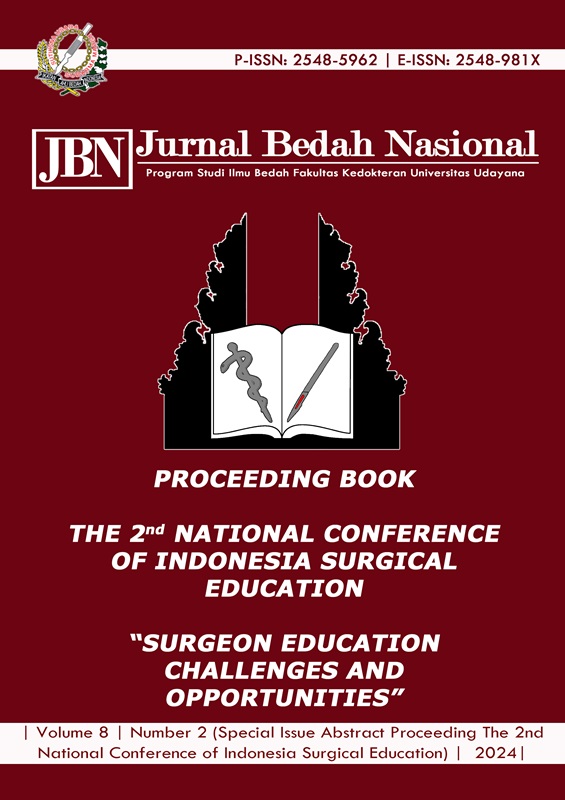009. Case Report: Cloacal Exstrophy a Rare Case of Abdominal Defect on Pediatrics
Abstract
Background: Cloacal Exstrophy (CE) is a rare congenital disorder. CE caused by rupture of the cloacal membrane before the urogenital septum is formed, then causes herniation. CE has incidence of 1: 200,000 to 1: 400,000. Embryologically, CE is considered to be the result of a defect in the caudal mesoderm, around 29 developmental days, or failure of mesodermal migration during the primitive streak period resulting in failure of cloacal septation. The aims and objectives of this case report are to explain the case in depth with existing literature and its suitability. Case: The method used is prospective direct observation. The case, a female 2-days-old patient, presented with omphalocele, ileal prolapse, incompletely formed hindgut, open bladder, abdominal wall defect, and urine come from the hemiblader and meconium from the cecal plate. The patient was born via cesarean because the mother with fetal distress. The patient underwent a Dual Stage Pathway (DSP), first the abdominal wall defect was closed with a colostomy, then bladder reconstruction was carried out. The reconstruction procedure in CE cases can be carried out with Dual Stage Pathway (DSP), which consists of omphalocele reconstruction, bladder closure, gastrointestinal diversion and closure of the abdominal wall. Conclusion: CE is a congenital disorder in many organ systems including neurological, gastrointestinal, musculoskeletal, renal and genitourinary. Surgical management of CE patients requires multidisciplinary care with a multi-stage approach.
Downloads

This work is licensed under a Creative Commons Attribution 4.0 International License.
Program Studi Ilmu Bedah Fakultas Kedokteran Universitas Udayana. 
This work is licensed under a Creative Commons Attribution 4.0 International License.






